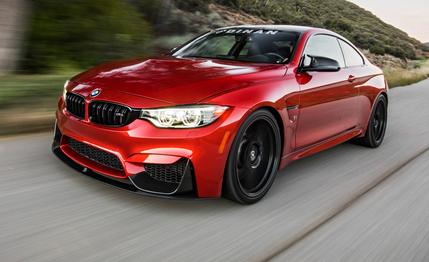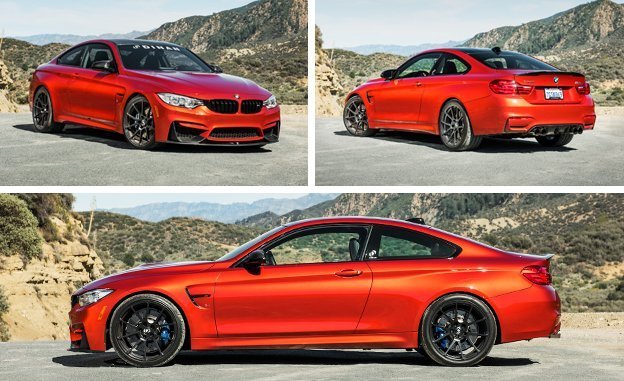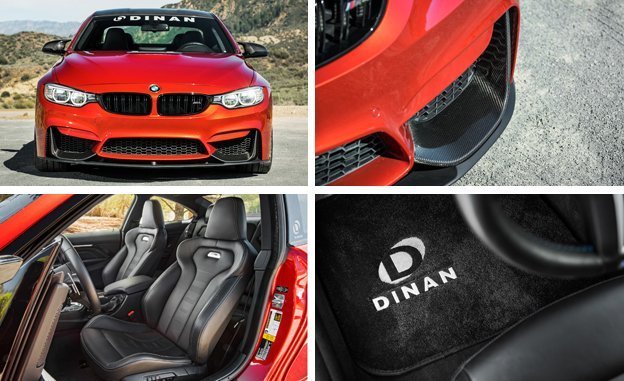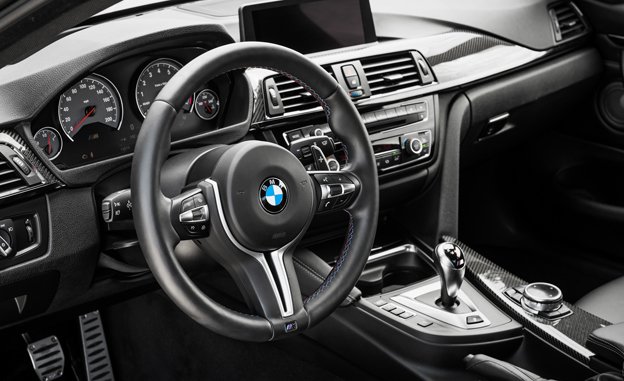
 Instrumented Test
Instrumented Test
Hearts sank in Bimmerland last February when Dinan Engineering founder Steve Dinan walked out the door of his own company to join Chip Ganassi Racing in its effort to take the new Ford GT to Le Mans. An era certainly ended as the company, based in Morgan Hill, California, and so long praised as one of the best suppliers of aftermarket BMW hardware and software, faced an uncertain future. But whether by sheer momentum alone or the steady hand of new management, Dinan Engineering continues to turn out highly polished aftermarket gear for BMWs. Well, we’re certainly reassured after driving the 530-hp Dinan S1 M4, which sharpens and refocuses a car that in stock form is drifting in the direction of a luxury GT.
For nearly three decades, Dinan has sent us demonstrators loaded up with a range of catalog items, and in turn we’ve gushed with slack-jawed amazement. However, it’s getting harder and harder for the aftermarket to dazzle us as automakers get better at delivering ultrahigh performance on their own or through specialty sub-brands. For companies like Dinan, there isn’t a lot of low-hanging fruit anymore.
The S1 M4 isn’t like most of the previous Dinans we’ve tested, in that it hasn’t had a cost-no-object engine gutting and rebuilding. With just $7247 in engine upgrades, including a Stage 2 DinanTronics signal conditioner ($2749), a freer-flowing stainless muffler ($2499), and a carbon-fiber cold-air intake ($1999), the S1 is a relative bargain. That is, compared to the S3-R M3 we tested in 2010, which had an astounding $31,234 in engine modifications alone. Okay, so this new car doesn’t offer the audacious engine porn we’re accustomed to from Dinan, but it does claim a bump of 105 horsepower and 98 lb-ft of torque at a price most M4 drivers can afford. Yes, it’s a somewhat boutique price but still affordable.
That’s because instead of a new engine you’re buying a Dinan signal conditioner that piggybacks onto the car’s computer and shapes the incoming data to fool it into generating more boost. This is a tried-and-true method of altering engine output in an era of multiplexed and code-locked computer systems. But in a BMW it is no simple matter, owing to the complex nature of the way the engine senses its surroundings and operates everything from cam phasing to wastegates and more. If you’re going to bolt a signal conditioner into a BMW, you want it from a company that knows its business (and also offers 50-state-legal compliance and a four-year, 50,000-mile warranty).


The problem was that we couldn’t verify the performance claims on the test track. The S1 M4 ran from zero to 60 mph in 3.8 seconds, a tenth slower than a stock M4 with the DCT automatic we tested last year. The Dinan turned a 12.0-second quarter-mile at 122 mph—again, pretty much what we got with the stocker. We questioned Dinan about it and technical director Casper van der Schoot responded at length and with several points.
First, BMW’s factory horsepower ratings tend to be conservative, he says, and the stock BMW M4 does not make the advertised 425 horsepower and 406 lb-ft—at least, not on Dinan’s dyno. There, it makes 484 horsepower and 446 lb-ft of torque. With the company’s DinanTronics piggyback installed, the power increase is thus more like 46 horsepower and 58 lb-ft, a more modest (and believable) improvement. Dinan put its S1 M4 back on their dyno after we tested the car to recheck the output and found that their car was still producing the claimed 530 horsepower and 504 lb-ft.
If what van der Schoot says is true, the most improvement in the 60-mph time you could expect is maybe 0.2 second, and that’s assuming the tires and test conditions were the same, which they weren’t.
Our M4 DCT test happened in Michigan in August 2014, while the Dinan S1 M4’s test was conducted in July in the California desert. Two locations, two different types of fuel. For the most part, California pumps serve only 91-octane premium gasoline, while Michigan pumps offer as high as 94. Also, California’s unique summer blend of fuel prioritizes smog reduction over power production, says van der Schoot. In their experience, BMWs are very sensitive to octane differences and fuel quality, the computer aggressively dialing back the ignition to prevent pre-detonation.


What does it all mean? All things being equal, the Dinan upgrade may chisel a few tenths off the stock M4’s performance, but it’s not going to turn it into a Bugatti Veyron. Check out Dinan’s website for the detailed evidence the company offers. The seat of your pants will confirm that it’s certainly not slow, and in some midrange situations, such as dropping the hammer on the freeway to dive for an opening, the Dinan’s surge does indeed at least feel a little stronger and also sound louder and crisper thanks to the new exhaust. We did see some trimming in the 30-to-50 and 50-to-70 times, by 0.1 second each, and a serious cut in our 5-to-60-mph test, from 4.7 seconds down to 4.1, and in the run to 160 mph, which dropped by 0.8 second. So some extra power is definitely there.
The suspension equipment is perhaps the best use of funds if you’re on a budget. A set of adjustable Dinan coil-overs runs $1599, while new control arms that increase negative camber for sharper steering response are $1099. Add the adjustable anti-roll bar set (two bars and hardware for $900), and you have an M4 with all the flab milled out of it. Not that the stock M4 is flabby, but it does have a compromise in compliance that many owners would call livable but some would call insufferable.
The Dinan’s suspension tweaks don’t make it brutal, but it is firmer and less forgiving over the rough stuff. The body stays flatter through the corners, and the up-down motion is pared down to short, clipped shivers. Understeer is absent, although if you go to a circuit, you’ll undoubtedly find some, if not on the first lap then the third. Meanwhile, if you like a more track-oriented tune as your everyday setup, Dinan’s operators are standing by.


Rounding out the $10,984 in total S1 package upgrades is the $139 aluminum pedals. The photo car also has some extra options, including a $6550 set of forged-aluminum 20-inch wheels, a $1260 carbon-fiber front splitter, a $1200 rear diffuser, mirror caps at $345 for the pair, and a $150 black-kidney grille.
With Pirelli P Zero Corsa tires replacing the stock Michelin Pilot Super Sports and sized 275/30 in the front and 305/30 in the rear, the Dinan stopped with its factory brakes in 157 feet and circled the skidpad with 0.97 g, similar stats to the production model but, alas, slightly worse. Let’s face it: Big wheels are for show.
Some of the Dinan bits may seem expensive, but so is the M4 at $66,395 to start (Dinan’s 2015-model-year car had a few factory options and was $77,050 before fettling). Open the hood and you discover a beautiful carbon-fiber boomerang for a chassis brace, under which is perhaps the sweetest six-cylinder engine in production. Regardless of which aftermarket supplier you turn to, if you’re going to improve on this symphony of sumptuous engineering, don’t deface this machine with cheapness.